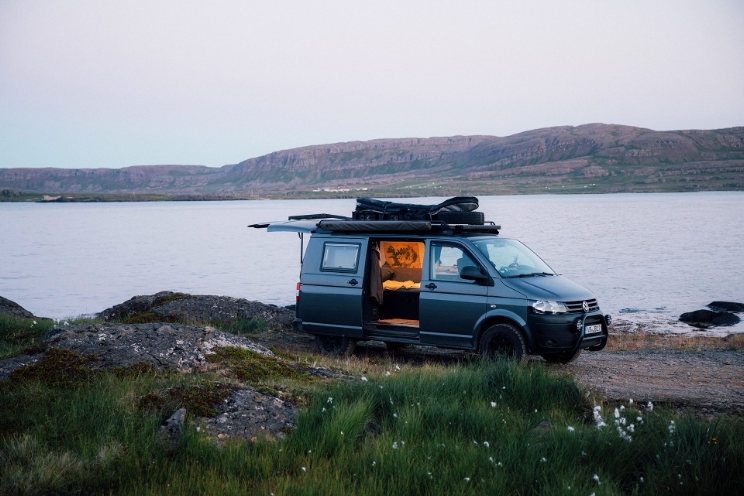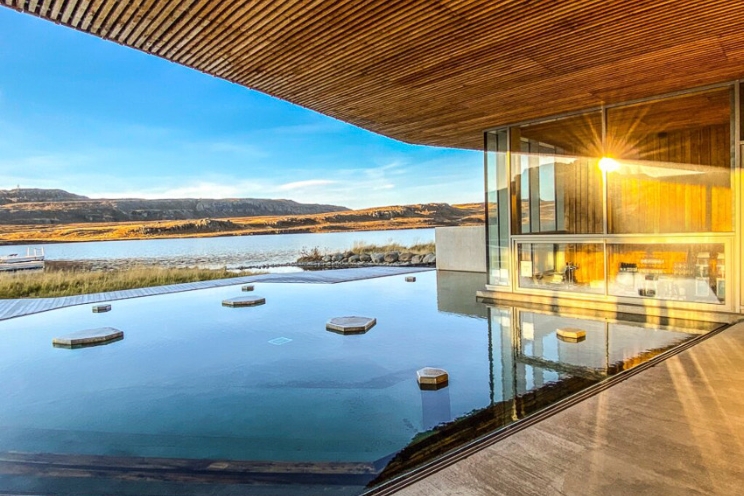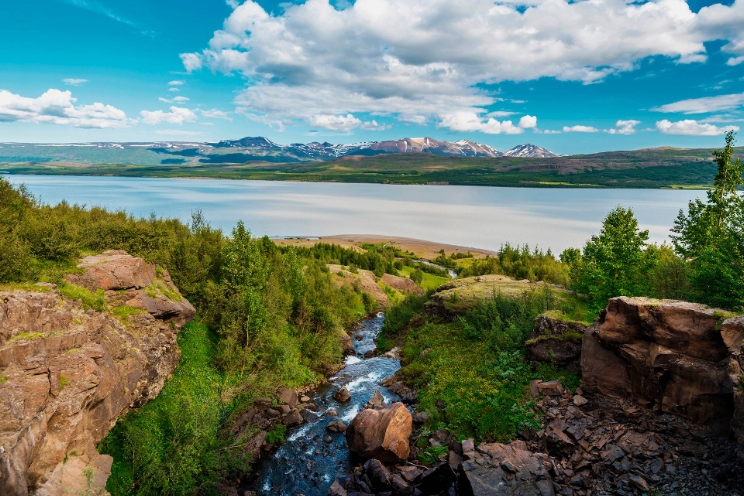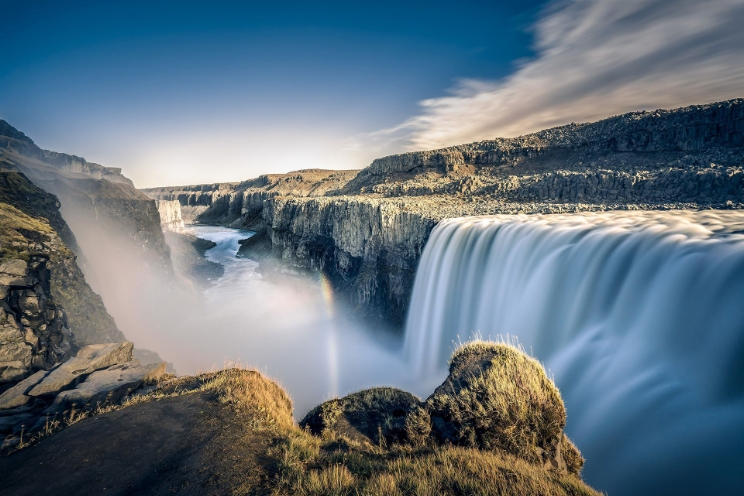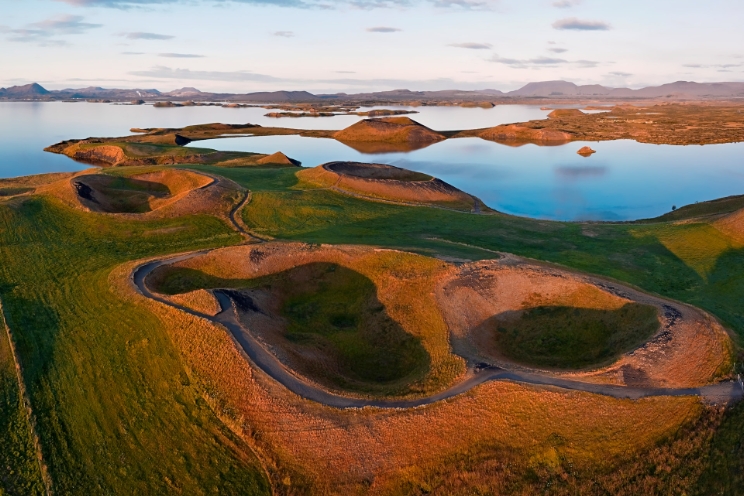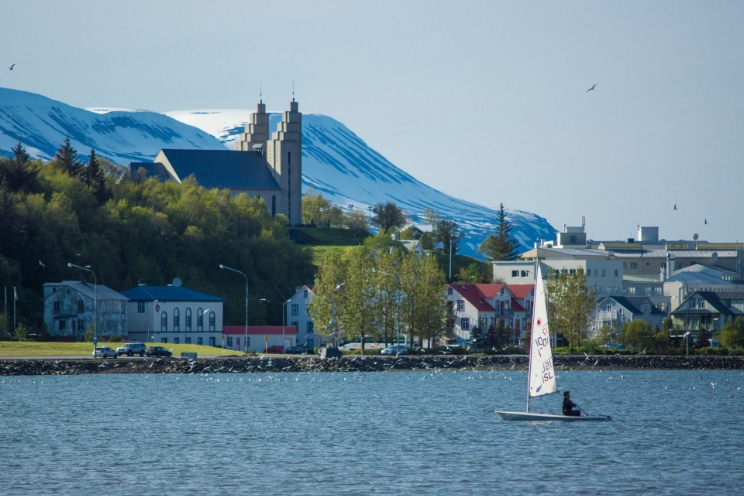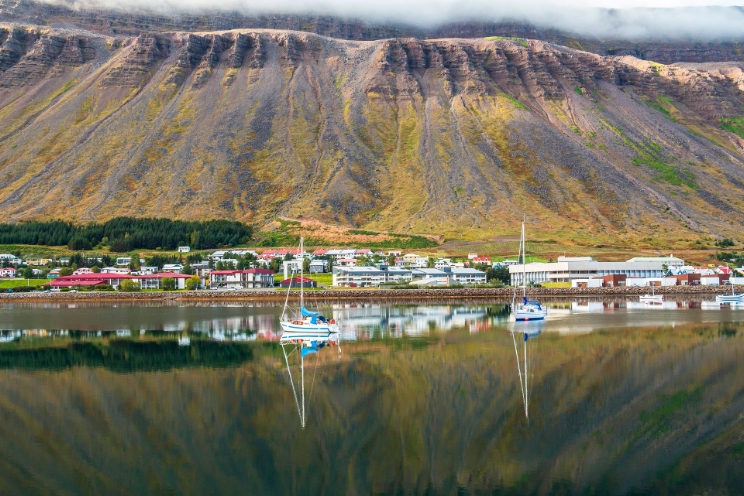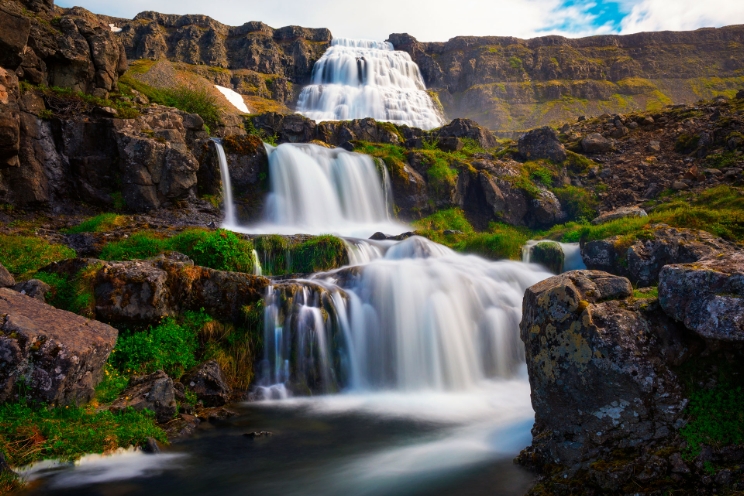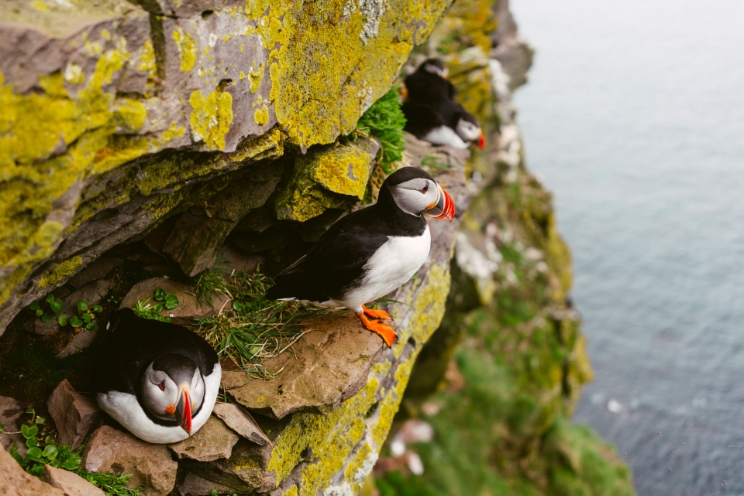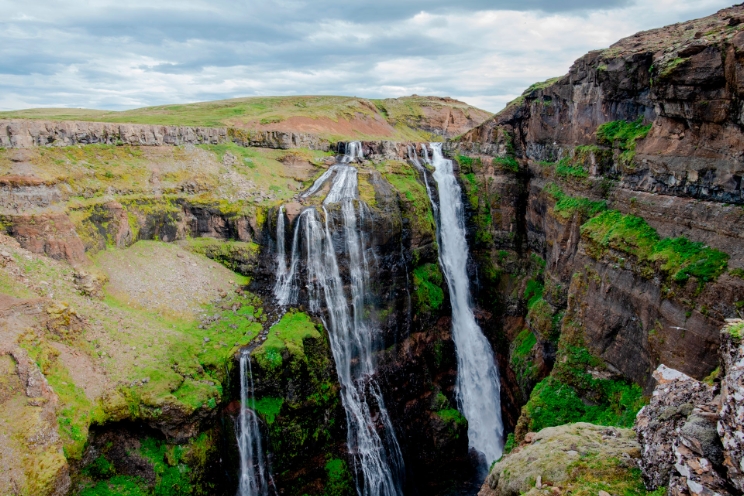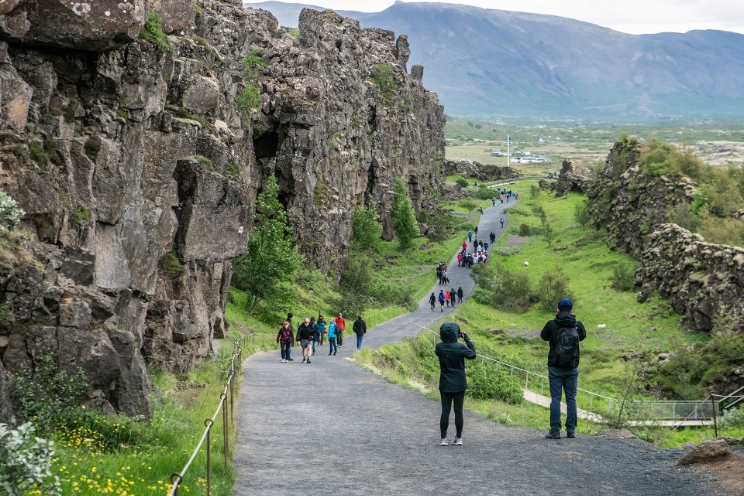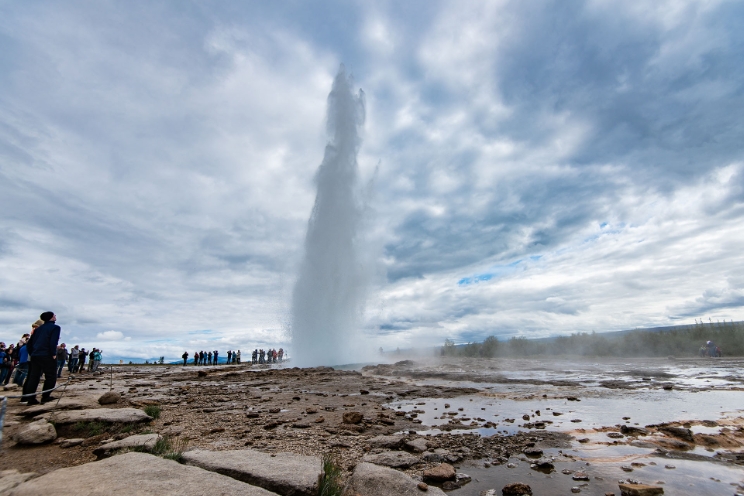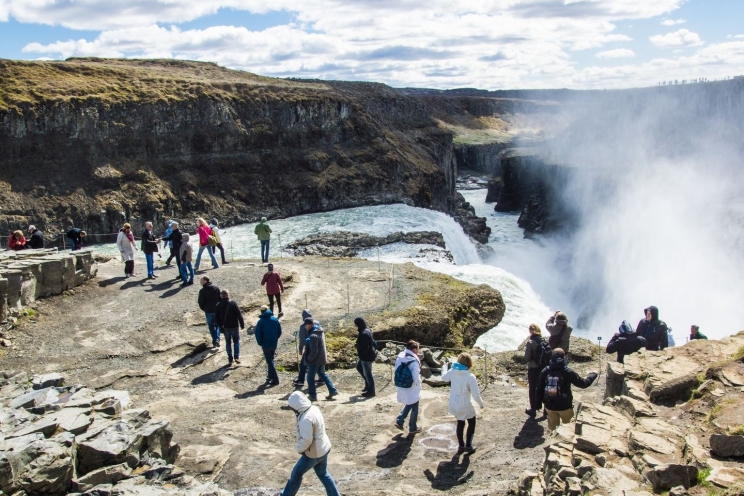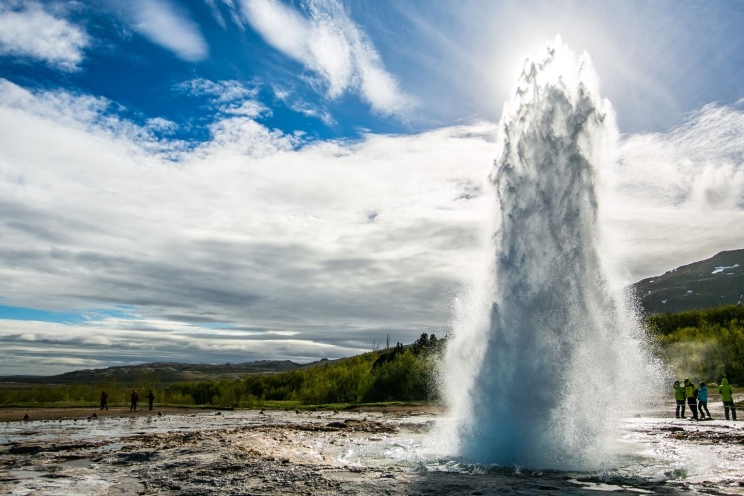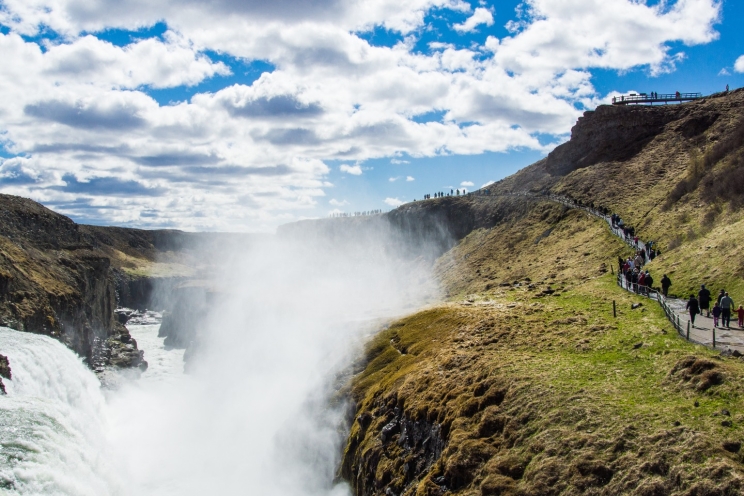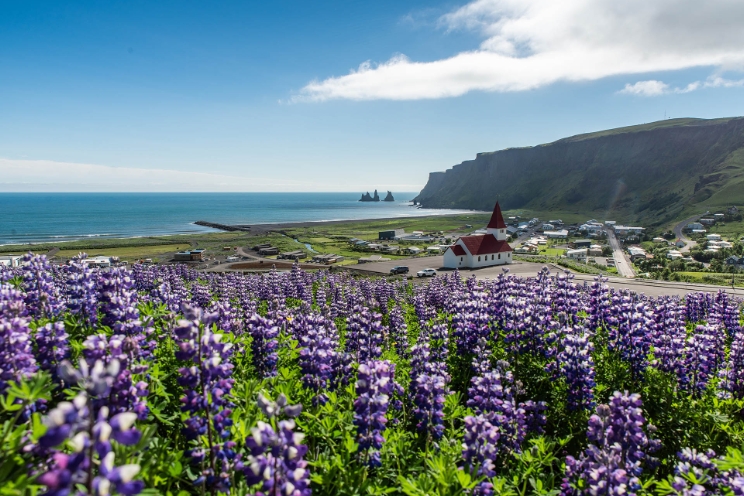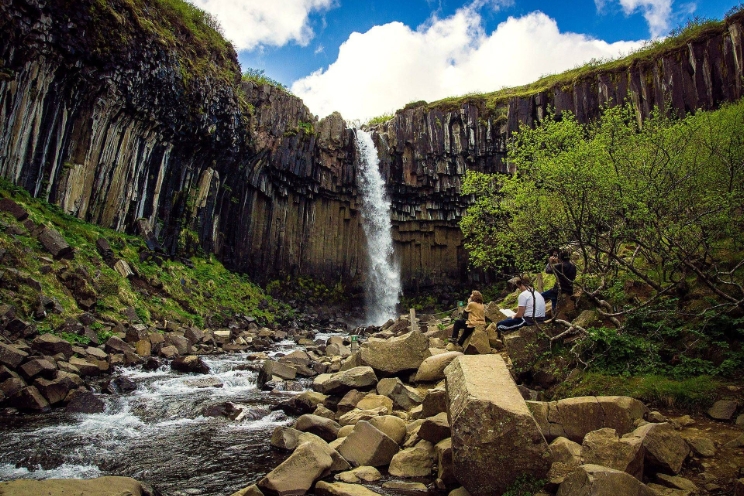Iceland was described by those who discovered it as being covered in forest from mountains to coast. This makes it more astonishing to see how few trees and forest areas are left on the island today. Over the course of time, anything that was suitable for building and heating was cut down, while grazing took care of the rest. Attempts are now being made to reforest the country. The largest forest area is found at Hallormsstaður in the east, while the remaining forests mainly consist of scrublands.
The highlands are dominated by volcanic deserts, at best sparsely covered with moss and grass. In the large, wide valleys and in the coastal zone, you will encounter meadows, pastures and cornfields that immerse the land in a lush green. Vegetables are mostly grown in greenhouses and partly outdoors in areas where thermal springs give off sufficient heat.
You are unlikely to come across any wild land mammals. There is a small population of arctic foxes, as well as mink that have escaped from fur farms and spread across the country. Both have an impact on birdlife, especially in the case of ground-nesting birds, and are therefore hunted. There are also some reindeer in the east, the ancestors of which were abandoned by Norwegian settlers. Since the construction of the dam project on the eastern side of the island, they have migrated towards the coast. Last but not least, the growing population of runaway rabbits are breeding like, well, rabbits!
Other mammals that you can expect to encounter close to settled areas are most often domesticated animals such as sheep and horses. But beware! Occasionally these will be found next to the road or right on it
Seals are often spotted on the coasts, and you can look forward to seeing the whales off the island’s shores on a whale watching tour and to fresh fish on your plate. There are no reptiles or amphibians. You may be pleased to hear that there are very few insects – apart from the midges, especially on Mývatn. However, some wasp species have recently begun to settle in. Recently, there are also tiny mosquitoes in the south – which you might call globalization also finding its way into nature.
The birdlife is overwhelming. Millions of seabirds breed on the bird cliffs and around the lakes. Puffins, gannets, guillemots and thick-billed guillemots are common, as are many species of gulls and the lively arctic terns that travel the long distance between Iceland and their winter quarters in Antarctica and South Africa.
Inland waters and coasts are a paradise for many species of ducks, geese and swans. Many eider ducks can be found in the coastal area, which are bred to obtain high-quality eider down. White-tailed eagles and gyrfalcons are responsible for the natural regulation of the animal population, but their help is not sufficient, which is why ptarmigan and geese are also hunted by humans.

